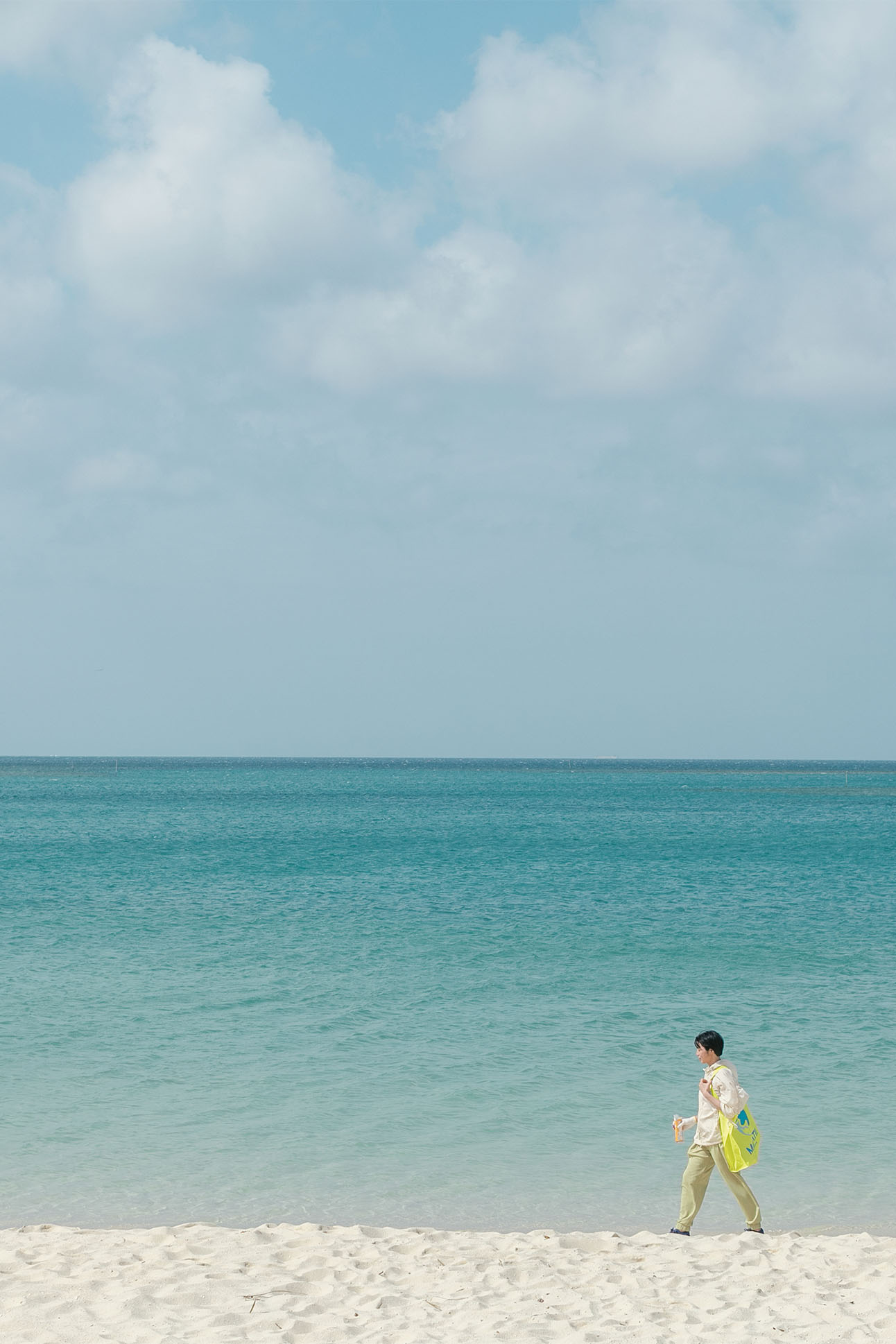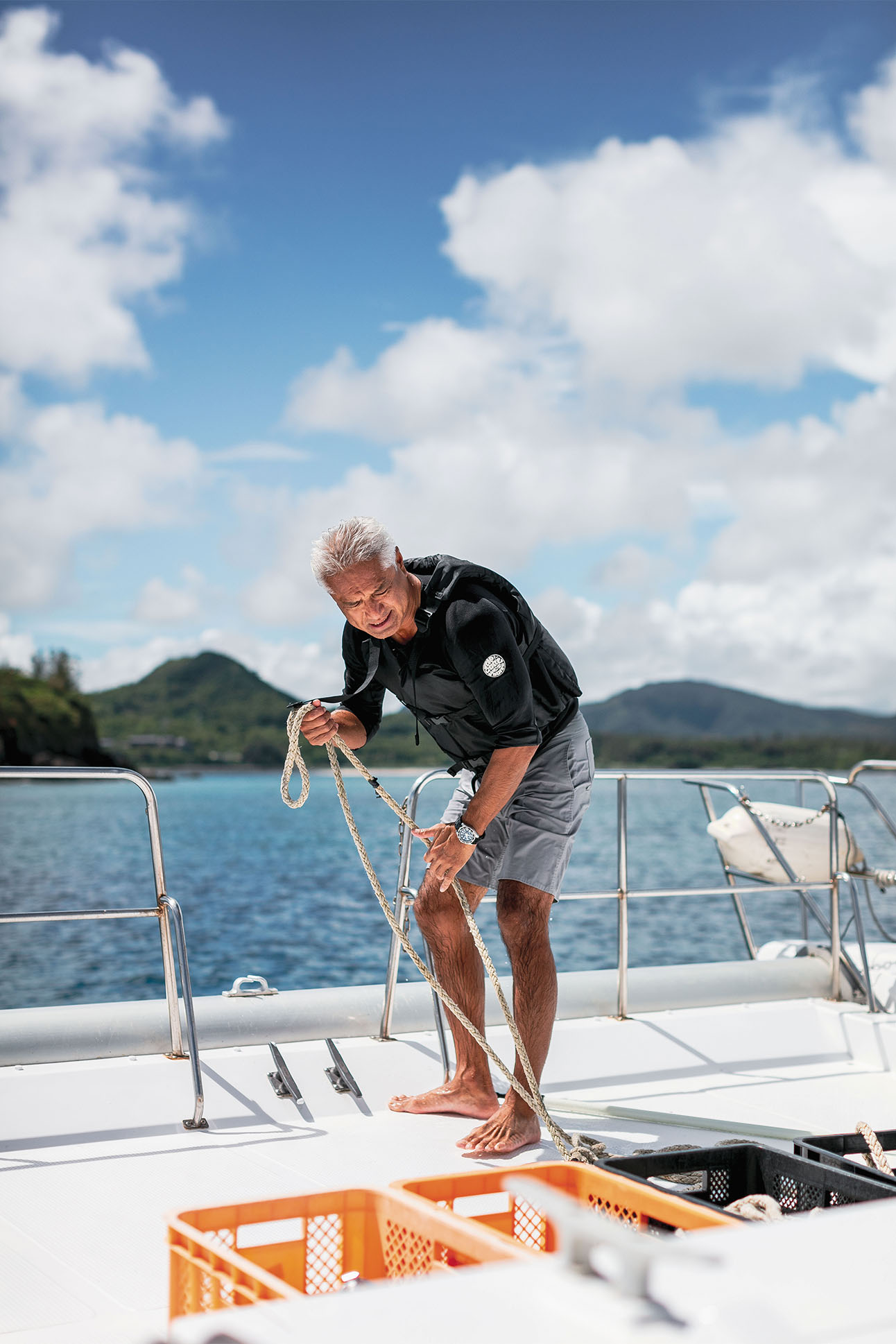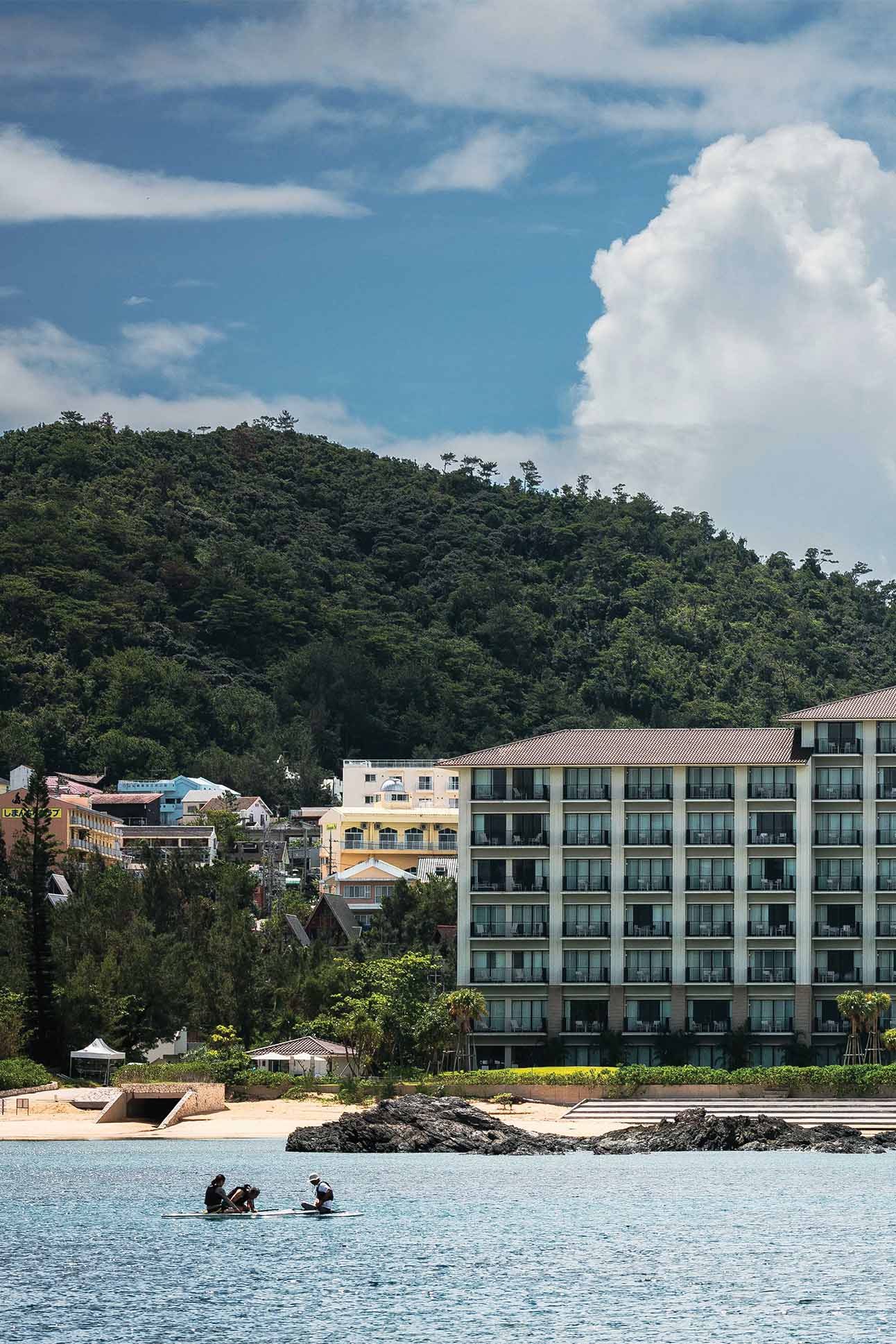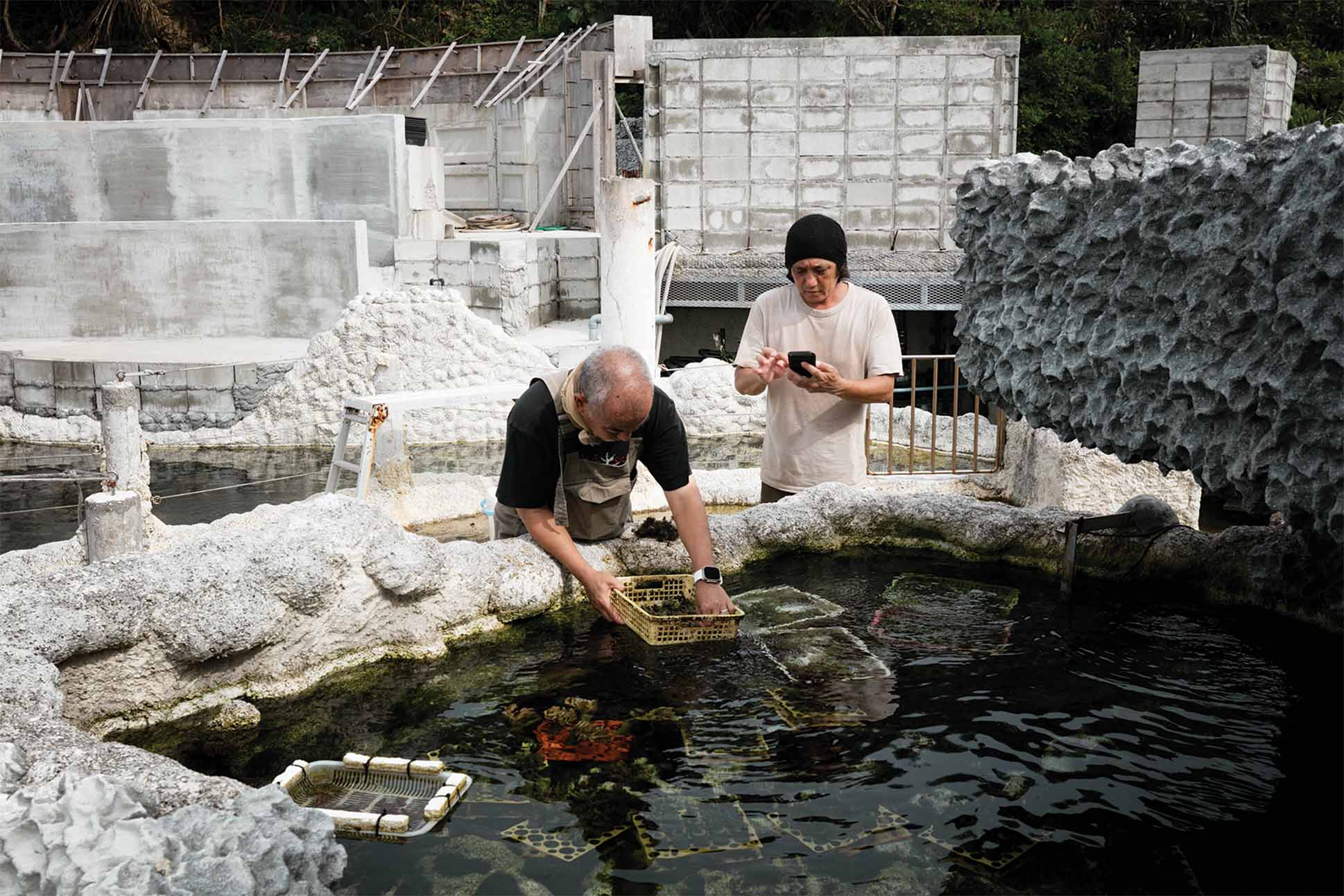Growing up in Okinawa, Yukino Kinjo had always thought of herself as an ocean lover. But as with many casual beachgoers, the sea was mostly a picturesque backdrop for barbecues, sunsets, and the occasional dip in the water. Then, at age 18, she took a diving course that changed everything.
Descending below the waves, she was astonished to discover a breathtaking seascape of corals teeming with fish, crustaceans, and mollusks. The experience made her a proselytizer of the reef, eager to instill in others the same sense of wonder she felt upon encountering its vibrant splendor for the first time. “When people would tell me how beautiful it is,” she says, “it was as though they were also complimenting me.”
So it came as a shock some years later when, on a snorkeling trip to a neighboring island, a fellow diver told her the sunscreen she was applying was toxic to coral reefs. “His words haunted me,” Yukino recalls. “I love the ocean—I thought I was one of the good ones.”


She dedicated herself to researching everything she could on the subject, learning that chemicals commonly found in sunscreen—oxybenzone and octinoxate, among others—are indeed detrimental to coral health. She also found that, despite an abundance of commercially available alternatives in the West, there was relatively little awareness of the problem in Japan. Eventually, she was able to leverage her growing expertise to develop her own reef-safe sunscreen formula, launching the product Coral-friendly Sunscreen in 2017. Two years later, she followed it up with another project, Manatii, partnering with local organizations to offer beach clean-ups as an ecotourism activity for residents and visitors.
Yukino is not alone in taking a stand for Okinawa’s coral reefs. Midway up Okinawa Honto’s west coast, the mayor of Onna village declared Onna a “Village of Coral” in 2018 in a pledge to protect its famed reefs. Home to some of the island’s finest snorkeling and diving sites, Onna became the first tourist destination in Japan to adopt sustainable tourism guidelines set forth by Green Fins, an initiative of the UN Environment Programme and The Reef-World Foundation, a U.K.-based charity.
Two years after Halekulani Okinawa opened its doors in Onna village in 2019, it joined the community’s efforts to uphold Onna’s designation as a “Future City” in support of the United Nation’s Sustainable Development Goals (SDGs) for the area, including contributing to coral reef and marine environmental conservation around the hotel. “Only 0.2 percent of the sea is coral reef, but a quarter of all marine life depends on it,” says Eijun Kuninaka, who leads the hotel’s SDG initiatives. “Coral provides nutrition to small creatures, such as shrimps and small fish, and these are food for the bigger fish, and so on up the food chain.” Unless meaningful action is taken, Kuninaka believes the world’s corals will be gone within this century—a potentially devastating blow to coastal communities that rely on coral reefs for sustenance, income, and protection, and to the countless others who benefit from the vital ecosystem services they provide.

Only 0.2 percent of the sea is coral reef, but a quarter of all marine life depends on it.
Eijun Kuninaka, Halekulani Okinawa



Though experts agree that a variety of strategies are necessary to address threats to the world’s reefs, environmentally sustainable coral cultivation is one of growing interest among those in the field. Kuninaka is restructuring the program based on research by the Tropical Biosphere Research Center at the University of the Ryukyus to enhance the environmental adaptability of corals, aiming to increase the survival rate after coral transplantation. “Even if we can’t change anything in this generation, the next generation can continue [this work],” he says.
When it comes to protecting the island’s reefs for future generations, conversations often lead to one man—Koji Kinjo, who Yukino describes as “the face of coral preservation in Okinawa.” Research on Okinawa’s diverse coral reefs dates back to the mid-20th century, but it was thrust to the forefront in 1998, when a severe El Niño event led to the unprecedented mass bleaching of as much as 90 percent of Okinawa’s corals and the loss of 15 percent of corals worldwide. Koji, a restaurant and shop owner at the time, was deeply disturbed at the grim sight. “I grew up with the ocean, and so I knew it when the coral was full of color, in Hi-Vision,” he recalls. “But it was like we had switched back to black and white.”


After many discouraging years of experimentation as an amateur coral farmer, Koji was successful in propagating, transplanting, and spawning coral in the wild. At Sango Batake, the coral breeding facility he went on to build on the coast of Yomitan village, Koji now educates visitors about reef ecology and has grown nearly 200,000 corals from 120 species. He jokingly calls his farm a “supply center,” but it’s also something of a laboratory—in recent years, Koji and his team have made groundbreaking headway in breeding coral resistant to warmer waters. “Corals have a longer history than humans,” he says. “They are adapting.”
But it’s not only the corals that need to adapt, Koji says. “Our generation came to believe it’s not our fault—it’s someone else’s, so we don’t have to take responsibility or do anything about it,” he says. “If we keep that kind of attitude and do nothing, the next generation will say, ‘Our parents’ generation just experienced the good things and didn’t leave anything.’”


